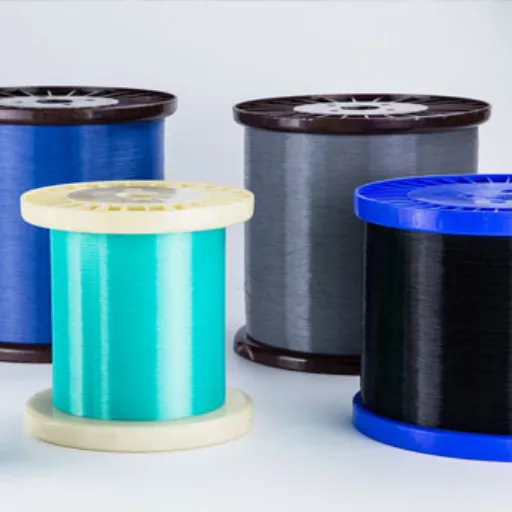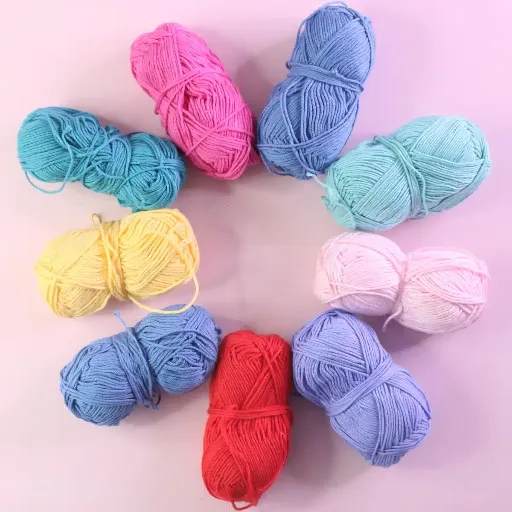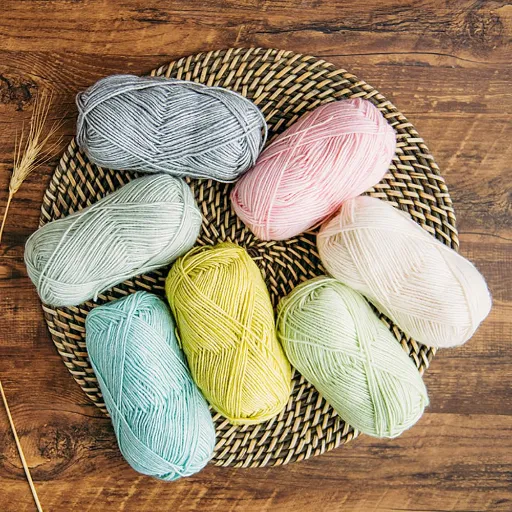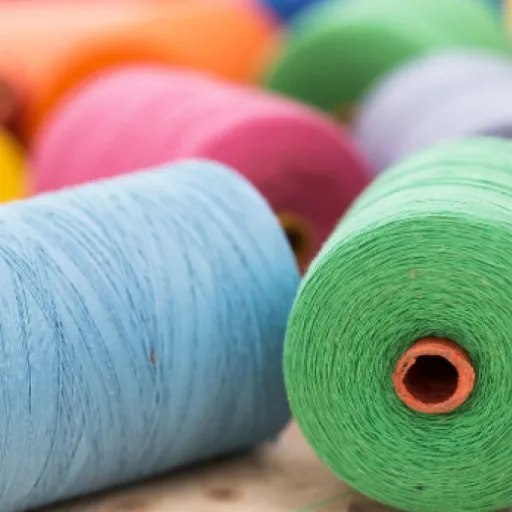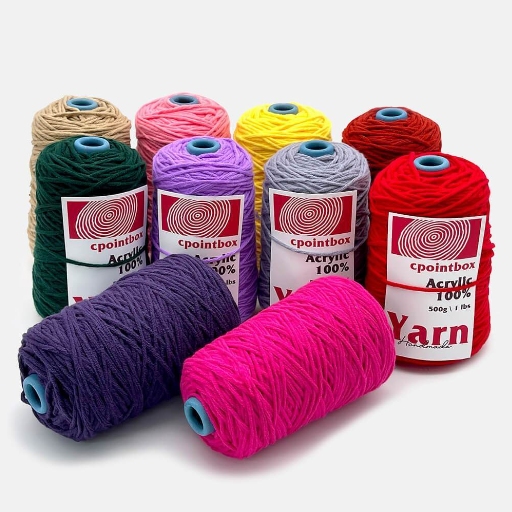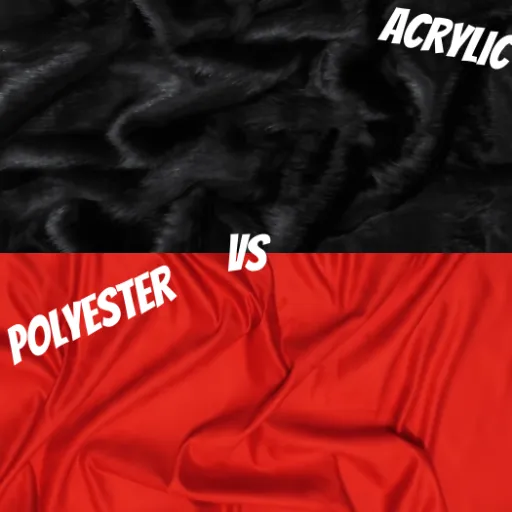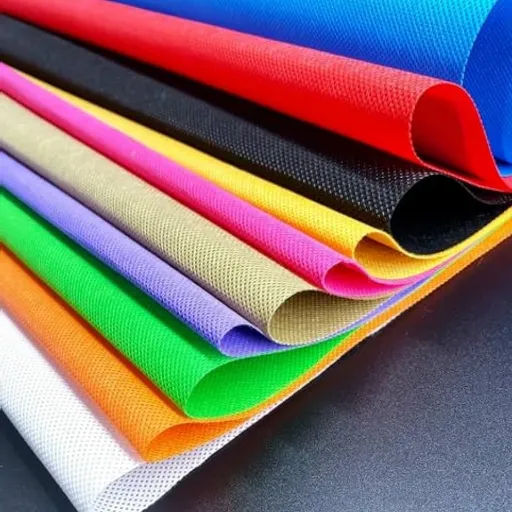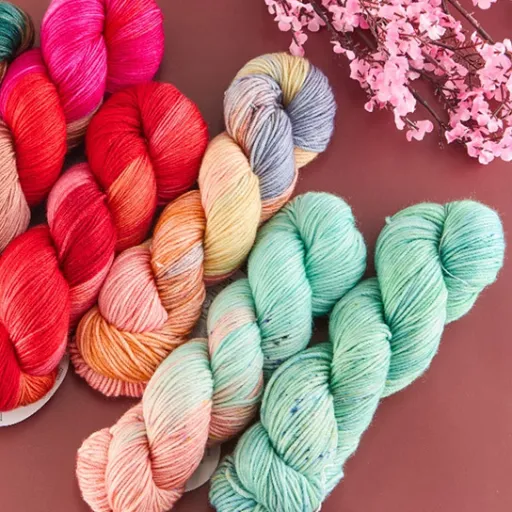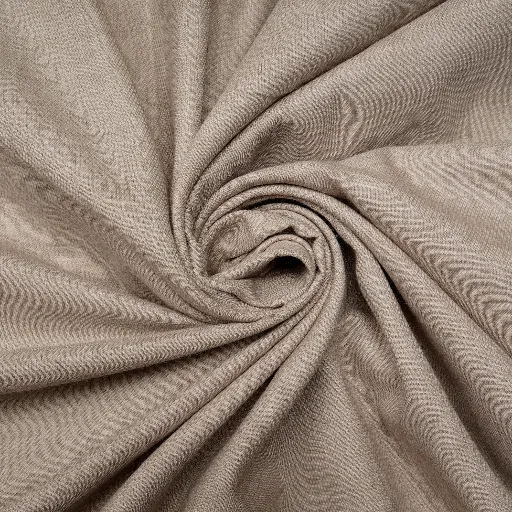When it comes to fabric selection for garments, upholstery, or outdoor kits, two regular candidates stand out—acrylic and polyester. Both materials are of synthetic origin and have a variety of practical uses, but they are different enough in their properties to be better fitted for different areas of application. Are you searching for long-lasting stuff, comfy materials, or low-cost products? Each of these fabrics has its plus points and singular features that might affect your final decision. This post will outline the main differences between acrylic and polyester so you can choose wisely according to your requirements. Whether you are a pari of fashion lovers, an avid DIYer, or merely someone curious about fabrics, we will not disappoint you. Continue reading to see how these materials compare in terms of comfort, performance, and versatility!
Introduction to Acrylic and Polyester
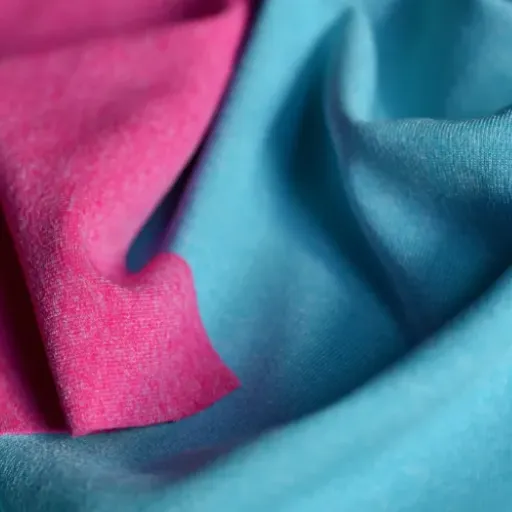
Understanding Synthetic Fabrics
Synthetic fabrics, including acrylic and polyester, are artificial fibers produced through chemical processes. They are substances that replicate the properties of natural fibers and are made with the intention of providing specific advantages such as long life, versatility, and cost-effectiveness. The production of acrylic involves a process that converts a polymer known as polyacrylonitrile into the final product, while polyester is made from polymers that are derived from petrochemicals. Both fabrics, with their own characteristics and adaptability, continue to occupy significant positions in the textile industry.
Acrylic is widely known for being soft and possessing a texture similar to that of wool, so it is among the most commonly used materials for sweaters, blankets, and other winter clothing. It features great insulation, lightweight quality, and being fade-resistant, end-users can differentiate acrylic for certain applications. However, acrylic might not allow as much air to pass through as natural materials, and its property of forming pills over time can be considered a downside by some consumers.
Polyester, in contrast, is synonymous with long-lasting fabrics that possess the ability of keeping the wearer dry, and the fabric is also wrinkle and shrink resistant. This makes polyester the choice for activewear, camping equipment, and home textiles. Polyester is also a fabric that is highly adaptable and can be mixed with other fibers for performance improvement. It is less prone to pilling than acrylic, but it can still retain odors and is not as warm or soft as polyester for the comfort of the wearer. Knowing the differences among these fabrics can be crucial in ensuring that one selects the fabric that best suits his or her particular requirements.
Common Scenarios Involving Acrylic and Polyester
1. Clothing for Cold Weather
Acrylic is a material commonly used in making sweaters, scarves, and gloves due to its warmth and softness which are similar to those of wool. The price of natural wool is very high and the only thing that its lightweight nature and insulating properties do is make it an affordable alternative. Polyester, in contrast, is frequently incorporated in the production of outerwear and jackets together with other fibers to prolong their life and resist water penetration.
2. Sportswear and Activewear
Polyester is the ruling fiber in the marketplace of activewear for it possesses all the good qualities like moisture-wicking, quick drying, and non-shrinking, to mention a few. It is perfect for gym clothes, athletic uniforms, and running gear. Reports have it that by 2028 the global market for sportswear, a large part of which is made up of polyester, will be worth USD 267 billion, and its annual growth rate (CAGR) will be 6.6%.
3. Home Furnishings
Acrylic is preferred for home textiles, such as blankets, rugs, and upholstery, mainly because of its warmth and vibrant color retention. On the other hand, polyester, which is also used in curtain, cushion cover, and bedding industries, has these qualities: durability, stain resistance, and the ability to maintain its shape even after several washes.
4. Outdoor Gear and Equipment
Synthetic fabrics are necessary for outdoor activities that demand performance. For such reasons, polyester fabrics are widely chosen for tents, raincoats, and backpacks, as they possess water-resistant and lightweight properties. On the other hand, acrylic fibers sometimes find their way into the production of outdoor furniture and awnings because they have superior percentages under UV exposure.
5. Blended Fabrics for Versatile Applications
The combination of acrylic and polyester gives manufacturers the chance to create fabrics with diverse functions. For example, blended fabrics are in coats and gloves to make them extra durable besides being still comfortable and warm. Research indicates that such blends are becoming consumers’ choice more and more, especially in areas with changing weather conditions.
Recognizing the practical uses of acrylic and polyester in these cases will help both manufacturers and consumers in making decisions that are suitable for their requirements.
Why Knowing the Differences Matters
Different fabrics and their properties make great differences between knowing how one can use the right material for the specific purpose. Each fabric has its own set of properties, where some will be covering and heating while others will focus on life or performance. If these distinctions are known, the makers and the users can take the right steps that would be practical for them, whether it is making a dressing, a bed, or a sportswear.
The knowledge of fabric types has a great impact on the product’s quality and the customer’s satisfaction. The choice of a wrong fabric may cause the product to get spoiled sooner than intended, to be uncomfortable for the user, or not to last for long; and all these can lead to the consumer’s dissatisfaction or the company’s resource wastage. Conversely, using the right materials may increase the functionality of the product, its lifespan, and the user’s satisfaction.
Moreover, fabric knowledge is a major factor that affects sustainability and cost-efficient processes. The decision to use unsuitable materials for a particular application leads to increased production and waste, thus less responsible consumption. Besides, having a clear understanding of the different fabrics can help the consumer realize the specific maintenance needed for the fabric and therefore take good care of the product, thus prolonging its life and maintaining its quality even after some time. This learning process brings along not just the individual benefits but also the global community’s turn towards more sustainable textile usage as a whole.
Physical and Chemical Properties
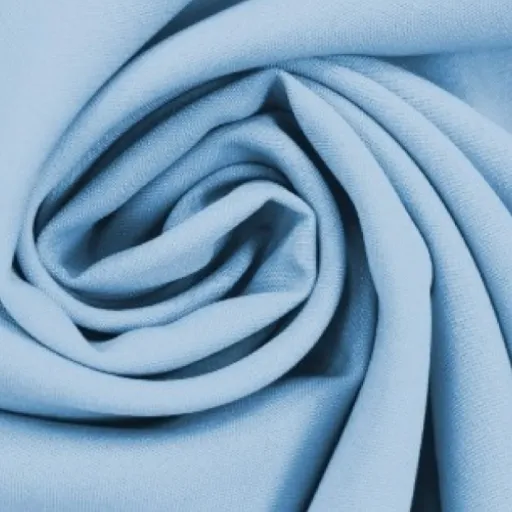
Texture and Feel of Acrylic and Polyester
There is a great difference in the texture and feel of acrylic and polyester. They are both synthetic fibers but one is suitable for a particular purpose and the other one is not. The first one is the acrylic fibers, which are winning praise for their softness and being similar to wool, thus giving the wearer comfort and warmth. Acrylics have a slightly fuzzy texture which is very close to that of natural fibers, like wool, but still, they are light and very pleasant to touch.
Polyester, in contrast, has a smoother and more uniform texture. It is often considered less natural than acrylic and its temperature is slightly lower than that of acrylic. Polyester is a material that is highly preferred because of its durability and resistance to wrinkles, thus making it perfect for items like sportswear or upholstery. But polyester, unlike acrylic, is not very good at keeping the warmth in, still, it offers a flexible, soft surface that can easily be used for different purposes.
Being aware of these differences allows customers to choose the materials according to their needs. The softness and warmth of acrylic make it the right material for winter clothing, blankets, and other accessories. On the other hand, the sleek texture and the high durability of polyester are perfect for multipurpose, easy-care products like casual clothing and home textiles. These differences also lead to better defined preferences and practices as regards care which would in turn prolong quality over time.
Durability and Longevity of Fabrics
The durability and longevity of fabrics are influenced by their material composition and maintenance. The natural fibers such as cotton and wool are the most comfortable but at the same time their life span is shorter if handled incorrectly. In most cases, preserving the integrity of these fabrics requires gentle washing and careful storage over the years. On the other hand, synthetic fibers like polyester and nylon stand for exceptional strength and thus are a better choice for the products that are subjected to constant wear and tear.
Regular cleaning and proper care practices are a must if one wants fabric to last for ages. For instance, washing the clothes on the right settings, not using strong chemicals, and air drying instead of machine drying can really prolong their life. Besides, putting the items in a dry and well-ventilated area will help avoid problems like mold or fiber breakdown in the long run. Being aware of the particular requirements of a fabric type can make a huge difference.
In the end, fabric selection should be in tune with its purpose. In cases where durability is required, synthetic fabrics are usually the winners over natural ones. However, natural fibers may be a selection for comfort or aesthetics. Proper care along with material selection will provide the fabrics with the quality and utility needed for as long as possible.
Moisture-Wicking and Heat Resistance
Moisture-wicking garments have been in the forefront of sportswear because they can efficiently pull sweat from the skin to the surface of the fabric, where it can undergo rapid evaporation. This property is essential for the user to feel the skin and body dry and cool during strenuous exercises or hot weather conditions. Most of the chemical fibers like polyester and nylon which are the main ones used in moisture-wicking, are created in such a way that they can control moisture very well.
On the contrary, heat resistance is the term used for the ability of the fabric to withstand the highest temperature without getting damaged or changing its properties. This quality is highly sought after in the industries that deal with high temperatures and also in making clothes for areas with extreme weather or for protection. Different kinds of aramid, wool, and some specially treated synthetic fabrics have shown to be very good heat resisters along with giving the quality of durability and safety.
In the process of material selection, it is very paramount to look at the purpose of the product and the place where the fabric will be used. Moisture-wicking materials are great for sportswear or daily attire in humid conditions, on the other hand, heat-resistant fabrics are the bearers of safety and dependence in work and outdoor clothing. Opting for a fabric with these precise traits means maximum efficacy and comfort.
Applications and Uses
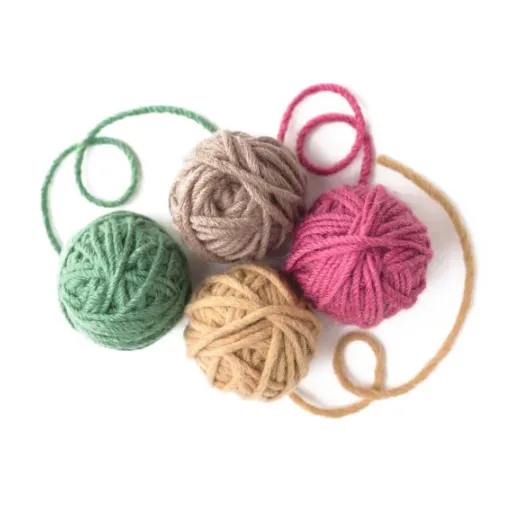
Apparel: Clothing Choices for Different Needs
There is perfect fabric selection according to the clothing’s use and its wearing conditions. Cotton is a very popular fabric for casual and comfy clothing. It is very soft, breathable, and comfortable. But then, people involved in intense activities require the use of synthetic blends like polyester or nylon. They are preferred due to their moisture-wicking properties and long lastingness. The body will be kept dry and comfortable while you will easily move anyway.
In the case of extremely cold weather situations, wool and fleece are very good to go as they give a lot of warmth and do not let you feel cold. Wool, in this context, has the factor of breathability and moisture repellence thus making it very suitable for sweaters, coats, and thermal layers. On the other hand, fleece is a very light material that can trap heat and is a very good choice for layering. Thus, these fabrics will keep the body hot enough to avoid frostbite and they will also give comfort in the winter weather.
When dealing with very hard environments or dangerous conditions, the use of specific materials is a must. Fireproof or heat-resistant fabrics will be really important in the case of safety. Such fabrics are usually made for industrial or outdoor work purposes, they can resist flames and high temperatures, thus the risk of injury is minimized. Similarly, UV protective clothes are a must in case of sun full exposure as they block the rays giving the protection. The right clothing will not only offer comfort but will also be a great factor of safety and functionality in challenging conditions.
Home Furnishings: Upholstery and Decor
As for home furnishings, right upholstery and decor can not only change the looks but also improve the overall functionality of the day to day usage of your space to a great extent. Upholstery, so to speak, is the covering for sofas, chairs, and cushions, and it creates the comfort and style factor in a living room. Won’t it be good if in selecting the durable and yet comfortable fabrics the furniture is still the one that sets the scene and the implication is still there of the visual beauty? Among others, the materials such as cotton, linen, or leather are chosen a lot because of their equal aspects of strength and beauty which makes them fitting for almost all kinds of interior design.
Curtains, rugs, and throw pillows which are decorative elements of the house, they also are very important in giving a warm inviting atmosphere and a beautiful cohesive look. Besides being very important, these accents are also the most flexible means of showing your personality and your tastes in the house while at the same time they can easily go together with or be in stark contrast to the main color palette of the room. The kind of decor that is consistent with your furnishings theme—modern, rustic, or eclectic—unified the whole space. It is not a waste of time, but rather a wise choice to adopt different textures and patterns in your home as they will give it dimension, and then your home would be more of an attractive point rather than a regular one.
In the end, functionality is still the same importance as style when it comes to home furnishings. Choose pieces that fit well with your lifestyle, for instance, if you have kids or pets then go for easy-to-clean fabrics, or in the case of smaller living areas, opt for space-saving furniture. One of the best ways to make sure that your furnishings do not just look amazing but also perform your daily needs with no effort at all is by focusing on the practical details such as stain resistance or modular designs.
Industrial Products: Functional Applications
The main aim of industrial products is to serve various industries as per their very specific needs and their functionality is the very thing that guarantees effectiveness and dependability in the whole process. The range of industrial products is so big that it includes everything – from heavy machinery to tools, materials, and components used in various processes like construction, manufacturing, or engineering. These products are designed to fulfill the harshest standards and, thus, quality and long life are two characteristics that must be given special attention.
One of the foremost industrial product application areas is manufacturing. To illustrate, precision tools and automation systems are regularly employed to facilitate production lines, which indirectly results in better output quality through reducing human error. These products contribute to productivity increase as well as cost reduction through waste and downtime minimization. Moreover, modern technologies such as energy-efficient machines and eco-friendly materials are progressively adopted as they are more aligned with the latest sustainability objectives.
Industrial products have another major application area, namely construction and infrastructure development. The use of materials with high strength such as steel, concrete, and advanced composites is unavoidable in the process of erecting buildings, bridges, and other types of infrastructures. The work of heavy machinery like hoists and bulldozers is characterized by exceptional accuracy and safety when it comes to activities such as digging and lifting heavy loads. It is through providing proper quality and being fit for certain uses that the industrial products continually support the growth and maintenance of essential systems around the globe.
Care and Maintenance Requirements
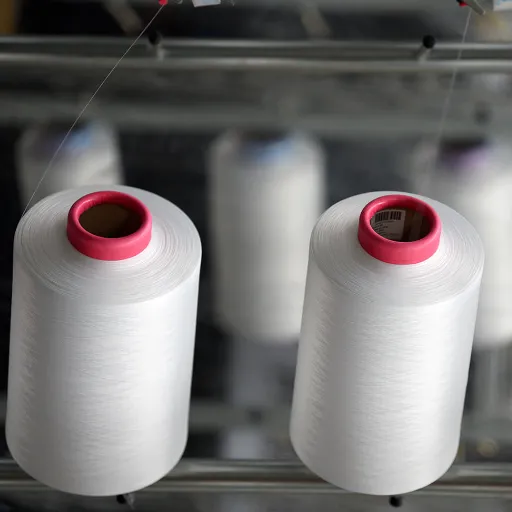
Washing and Drying Guidelines
The correct cleaning and servicing of the industrial equipment and the machines are the main aspects for them to be good for a long time and perform optimally. Below are comprehensive washing and drying guidelines that are in line with the best practices:
- Use Appropriate Cleaning Agents: Cleaning agents that are suitable specifically for the type of material or the machinery being cleaned should be selected. For example, metal parts with grease and oil need be degreased while delicate surfaces may require a pH-neutral cleaning solution. Using strong and harsh chemicals that can corrode the components or ruin the delicate parts is a total no-no.
- High-Pressure Washing: Heavy-duty and high-pressure washers are the ultimate solution for the removal of dirt, debris, and grease from heavy machines. You should always check that the water pressure is just right for your type of equipment to prevent any damage. If you are dealing with delicate parts or if it is a matter of electrical components then go for low-pressure options or do not let water come into direct contact at all.
- Drying Methods: Moisture that is not removed in proper time can lead to rust and corrosion which are very detrimental to the iron and steel based machines and parts. Industrial air blowers or microfiber cloths may be used to make sure that there is no water left behind. In the case of larger machines the heat-based drying systems can be looked upon to fasten the drying process.
- Frequency of Cleaning: The cleaning of industrial machinery should be done after heavy usage of the machines or in accordance with a regular maintenance schedule, for instance, weekly or monthly. Machines working in a dusty or humid environment would require cleaning more often.
- Safety Precautions During Cleaning: Be sure that the machine has been turned off and disconnected from the power supply before cleaning starts. Personal Protective Equipment such as gloves, goggles, and masks should be worn to protect against the chemicals that may be harmful. Follow the manufacturer’s manual for maintenance that has been pointed out to avoid the disappearance of warranty coverage.
Stain Removal Techniques for Each Fabric
The removal of stains from different materials necessitates the use of more specific methods that not only remove the stain but also protect the material. Below are some universal ideas to deal with the stains according to their fabric types:
Cotton and Linen: These strong fabrics are generally able to resist the action of stronger cleaning methods. Stains in general could be treated by applying a mixture of mild detergent and cool water to the area, and gently blotting rather than rubbing. For the toughest stains, pre-soak the garment in a solution of water and oxygen-based bleach, following the product’s instructions.
Silk and Wool: These fine fabrics do not take more than one gentle treatment. Always read the care label before. For stains on, moisten the corner of a cotton wool pad with lukewarm water and add a small amount of gentle detergent made for delicate fabrics. Don’t rub heavily, as it may cause the fibers to get weaker.
Synthetic Fabrics (e.g., polyester, nylon): These fabrics are seen as almost impervious to stains, but at the same time, when stained they can be treated easily via a simple spot treatment. Mix mild detergent with warm water then blot or gently rub the stain. For hard stains, treat the spot with a stain remover made for synthetic fabrics and be sure to rinse thoroughly afterwards.
Recognizing the special requirements of each type of fabric will enable you to efficiently stain-removal while still keeping the clothing or textiles’ quality and durability intact. Be sure to always first apply the cleaning technique on an inconspicuous area to verify that no discoloring or damage will occur.
Long-term Care for Durability
Long-term care applied correctly will guarantee the maintenance of quality and the life span of your fabrics and textiles. Firstly, always observe the care labels that are on your clothes or household fabrics since they give very important information that is specific to the material. Use suitable detergents for different kind of fabrics, staying away from harsh chemicals that can gradually weaken the fibers. When it’s possible, choose air drying instead of using the dryer to reduce the wear caused by heat exposure in dryers.
Storage is another major factor in fabric life. Textiles should be kept in a place with cool and dry conditions and away from sunlight which could cause fading and deterioration. Make sure the clothes are clean before putting them away; otherwise, they will attract pests like moths. If it is delicate or seasonal fabric, you can either use breathable garment bags or acid-free tissue paper for extra protection.
Moreover, it is a good idea to check and repair regularly to fix small damage like loose threads, tears, or fraying before they become big problems. Using textiles in turns, for instance, by going through bed linens in the same way or changing wardrobe seasonally helps to divide the wear evenly. If you adhere to these recommendations, you will be able to retain the appearance and the functionality of your fabrics for many years to come.
Environmental Impacts and Sustainability
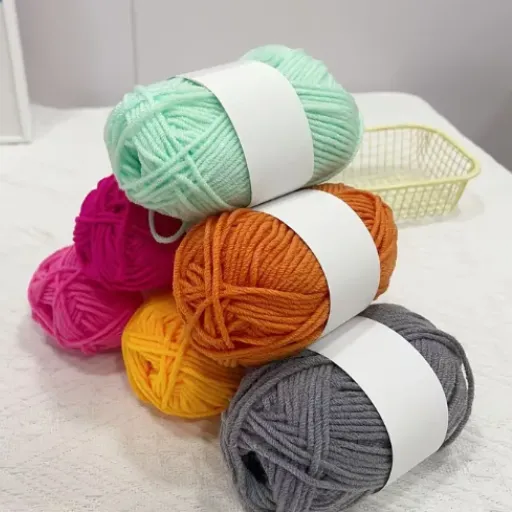
Production Processes of Acrylic and Polyester
Acrylic and polyester are synthetic fibers whose production processes use mainly petroleum-based materials. Through the polymerization of acrylonitrile, a soft oily substance from the oil refining process, acrylic is created. The chemical reaction is such that it links the acrylonitrile molecules together to make long chains, which are then cut into the fibers used in the textile. This process consumes a lot of energy and the resulting use of non-renewable resources adds to the environmental impact.
As for polyester, it is mainly produced by combining purified terephthalic acid (PTA) and ethylene glycol, both of which are derived from crude oil, through the process of polymerization. The polymer is subsequently melted and made into fibers, which are then woven into yarns for different uses, including clothing, upholstery, and other items. Just like acrylic, the production of polyester also consumes fossil fuels and emits greenhouse gases, particularly carbon dioxide, during its manufacture.
Acrylic and polyester production have already raised environmental sustainability issues due to the consumption of resources that are limited and the pollution caused by them. The processes release not only harmful by-products but also micro-plastics that find their way to rivers and other water sources, disrupting the ecosystems. Furthermore, the non-degradable nature of these products means that they remain in the environment for a long time, unaffected by time. It is therefore necessary to focus more on recycling and the development of environmentally friendly alternatives that would help mitigate these impacts and facilitate the shift to more sustainable textile production.
Recyclability and Eco-Friendly Considerations
The ability to recycle textiles has a significant impact on waste reduction and preservation of natural resources. The recycling process of fibers and fabrics reduces the demand for virgin materials, which in turn leads to less energy consumption and lower emissions of greenhouse gases that would otherwise be produced in the textile industry. The introduction of recycled materials in the production process facilitates the industry’s participation in the creation of sustainable and circular economies where resources are reused rather than thrown away.
Considering the environment implies the creation and application of materials and processes that are less damaging to nature. The use of natural fibers like organic cotton, hemp, and bamboo is increasing as they are not only biodegradable but also have a smaller environmental impact when compared to synthetic fibers. Moreover, the development of eco-friendly dyes and water-efficient production methods contributes to further minimizing the environmental footprint of the textile industry. This not only helps with managing waste but also reduces the harm done to the environment in terms of biodiversity and water supply.
Sustainability is not only an issue of the manufacturers but also that of the consumers. Directing people to practice the 3Rs (reduce, reuse, recycle) with their textiles can greatly reduce the amount of discarded clothing that goes to landfills. Furthermore, supporting initiatives for repairs, donations, and upcycling prolongs the life of the textiles. All these actions taken together highlight the necessity of a united front comprising the manufacturers, the lawmakers, and the consumers to confront the environmental problems the industry causes.
Comparing Environmental Footprints
The fashion industry is the most significant among the various industries when it comes to environmental footprints, mainly because of pollution and resource degradation which it has greatly and inseparably associated with. The whole textile production cycle entails the use of water, energy, and chemicals in great quantities, and consequently, there are high emissions of greenhouse gases. For instance, the cotton production which is a major textile, consumes large quantities of water and fertilizers thus making very heavy demands on the environment. The production of synthetic fabrics like polyester adds to the problem of microplastic pollution through the release of microplastics during the washing process. These eventually end up in rivers and the sea.
On the other hand, renewable energy and technology-centered industries are working hard to minimize their ecological impact as they grow more and more. These industries consume resources just like others but do so more sustainably and in eco-friendly ways like through cleaner forms of energy and circular economy models. Nevertheless, the issue of the technology industry’s ecological footprint remains a serious concern, particularly in the case of electronics manufacturing, which is responsible for e-waste and mining of rare earth minerals with localized but significant impacts.
In the end, the environmental impact of an industry is largely defined by its production procedures, resource consumption, and waste management. The implementation of solutions like sustainable materials, energy-efficient operations, and responsible disposal or recycling gives a chance for cutting off these footprints. A comparison of industries along these lines not only reveals areas of improvement but also places for innovation that would drastically cut down their total environmental impact.
Frequently Asked Questions (FAQ)
Q: What is the difference between polyester and acrylic fabrics?
A: The difference between polyester and acrylic fabrics mainly consists of their chemical composition and their properties. Polyester is obtained from polyethylene terephthalate, which is a PET, a type of plastic derived from petroleum, while acrylic is in the family of synthetic polymers. On the one hand, polyester is more durable and less likely to shrink, while on the other hand, acrylic is treated as softer and more pleasant, and indeed is the fiber most resembling wool.
Q: Is acrylic or polyester better for outdoor use?
A: In terms of the right fabric for outdoor use, polyester is normally a better choice owing to its UV resistance and durability. Polyester fibers can tolerate very high temperatures and are also water-repellent, allowing for fast drying. While the surface of acrylic fabrics is soft, they did not possess the same level of durability and weather resistance.
Q: How do the properties of polyester compare to those of acrylic?
A: The properties of polyester include high tensile strength, abrasion resistance, and excellent colorfastness, which make it ideal for sportswear and outdoor garments. On the other hand, acrylic has a lower weight and provides good insulation making it suitable for cold climates. Still, acrylic fabric may be the cause of pilling and thus may not be as durable as polyester.
Q: What are the key differences between acrylic and polyester yarn?
A: The key distinctions separating acrylic from polyester yarn are their feel and the use they are put to. The acrylic yarn has a nicer feel, and thus, it is mostly employed in making clothing like sweaters, whereas the polyester yarn is more durable and tear-resistant; hence, it is used in a variety of cloths like home furnishing and sportswear.
Q: Can I use acrylic in place of polyester for clothing?
A: You are allowed to make use of acrylic instead of polyester for some clothing items, especially if your priorities are to have a softer and more comfortable fabric. Nevertheless, for items that need to be durable and withstand the environment, polyester would be the better choice. It is really a matter of the purpose of the garment that is going to be decisive in the choice of acrylic or polyester.
Q: What environmental concerns are associated with acrylic and polyester?
A: The two fabrics, acrylic and polyester, are both made from fossil fuels and their production and disposal have negative environmental impacts. The source of polyester is crude oil, while the production of acrylic uses petroleum-based processes. To add to that, both materials are not biodegradable, which means they contribute to the problem of waste in landfills.
Q: Which material is better to wear for sensitivity to skin irritation?
A: Acrylic is generally considered to be the better option for people with sensitive skin since it is smooth and less likely to cause irritation than polyester which can sometimes be prickly. Nevertheless, one’s personal choice is of utmost importance and some may even find certain polyester fabrics very comfy.
Q: How does the upkeep of acrylic and polyester fabrics differ?
A: There are some differences in the maintenance cleaning of acrylic and polyester fabrics. Generally, polyester is considered to be the most convenient fabric to care for.
Q: Are acrylic and polyester fabrics breathable?
A: Breathability differs from acrylic to polyester fabrics. On the one hand, the moisture-wicking nature of polyester makes it perfect for activewear, on the other hand, acrylic would not be that breathable. However, it is also true for both the materials that if they have been woven and finished in a particular way, then their breathability can be enhanced.
References
- Big Z Fabric Blog: Two Common Synthetic Fibers – Polyester vs Acrylic – Discusses the properties, durability, and uses of both materials.
- Textile Yarn Blog: The Key Differences Between Acrylic and Polyester – Highlights the texture, softness, and other characteristics of these fabrics.
- Thai Polyester Blog: What’s the Difference Between Polyester Yarn and Other Synthetic Yarns – Compares polyester with acrylic and other synthetic materials in terms of breathability, durability, and bulkiness.








